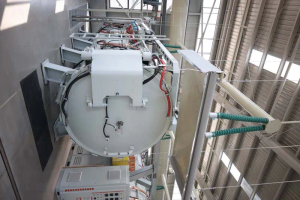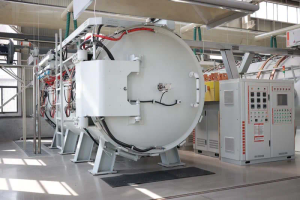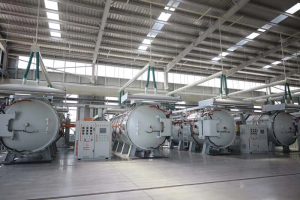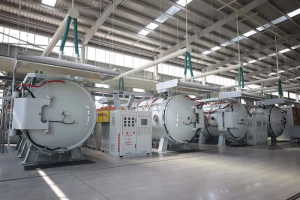Efficient Viral DNA Extraction- Common Laboratory Misconceptions and Optimization Suggestions
Efficient viral DNA extraction is a fundamental technique in molecular biology, crucial for various applications ranging from diagnostics to research. Despite its importance, there are several misconceptions surrounding the process that can lead to inefficiencies and suboptimal results. This article aims to address these common misconceptions and provide optimization suggestions to enhance the efficiency of viral DNA extraction.
Understanding Viral DNA Extraction
Viral DNA extraction involves isolating DNA from viral particles within dna extraction reagent a sample. This process typically includes cell lysis, removal of proteins, and purification of the nucleic acids. Given the complexity of viral structures and the variety of samples used, different strategies may be employed depending on the specific requirements of the experiment.
Common Misconceptions
One prevalent misconception is that all extraction methods are equally effective for all viruses. In reality, the choice of extraction method can significantly impact the yield and quality of the extracted DNA. For instance, methods suitable for extracting DNA from bacterial samples may not be effective for viral samples due to differences in structure and composition.
Another misconception is that longer extraction times always result in higher yields. While it is true that some processes benefit from extended incubation, excessive time can lead to degradation of the DNA or contamination with other nucleic acids. Understanding the balance between time and efficiency is key to successful extraction.
A third misconception is that the presence of inhibitors, such as proteins or contaminants from the sample, does not affect the extraction process. Inhibitors can interfere with enzymatic reactions during PCR, leading to false negatives or reduced amplification efficiency. Recognizing and mitigating these inhibitors is essential for obtaining high-quality DNA.
Optimization Strategies
To achieve efficient viral DNA extraction, several strategies can be implemented:
Sample Preparation
Proper sample preparation is critical for successful extraction. Ensuring that samples are adequately homogenized can enhance the accessibility of viral particles. For instance, using bead-beating or vortexing can help disrupt cellular matrices, allowing for more efficient lysis.
Selection of Extraction Method
Choosing the right extraction method is pivotal. Common methods include phenol-chloroform extraction, silica-based methods, and magnetic bead techniques. Each has its advantages and disadvantages. For instance, while phenol-chloroform extraction can yield high-quality DNA, it requires careful handling due to toxicity. Silica-based methods are user-friendly and often provide good yields but may not be as effective for certain types of viruses.
Optimizing Lysis Conditions
The lysis step is critical in viral DNA extraction. Optimizing conditions such as temperature, pH, and time can significantly influence the efficiency of viral DNA release. For instance, using heat-stable enzymes can improve lysis efficiency while reducing the risk of DNA degradation.
Incorporating Pre-Extraction Clean-Up
Implementing pre-extraction clean-up steps can help remove potential inhibitors from the sample before the extraction process. Techniques such as centrifugation and filtration can be employed to separate viral particles from cellular debris and other contaminants.
Post-Extraction Purification
After extraction, further purification steps can enhance the quality of the isolated DNA. Techniques such as ethanol precipitation or column-based purification can help remove residual contaminants that may interfere with downstream applications.
Assessment of DNA Quality and Quantity
It is essential to assess the quality and quantity of extracted DNA before proceeding to applications like PCR. Methods such as spectrophotometry and gel electrophoresis can provide insights into the purity and integrity of the extracted DNA. A260/A280 ratios can indicate protein contamination, while gel electrophoresis can reveal the size and integrity of the DNA.
Troubleshooting Common Issues
Even with optimized protocols, issues may arise during viral DNA extraction. Recognizing and addressing superparamagnetic beads these problems promptly is crucial for maintaining the integrity of the results. Some common issues include low yield, contamination, and degraded DNA.
Low Yield
If the yield of extracted DNA is lower than expected, first check the efficiency of the lysis step. Insufficient lysis can prevent the release of viral DNA. Adjusting lysis conditions, such as increasing enzyme concentration or extending incubation time, may resolve this issue. Additionally, ensure that the extraction method is suitable for the specific virus being studied.
Contamination
Contamination can occur at various stages of the extraction process. To minimize this risk, maintain strict aseptic techniques throughout the procedure. Using dedicated equipment and reagents can also help reduce the likelihood of cross-contamination between samples.
Degraded DNA
If the extracted DNA appears degraded, review the lysis and extraction conditions. High temperatures or prolonged exposure to nucleases can lead to degradation. Implementing measures to protect DNA during extraction, such as using RNase-free reagents and keeping samples on ice, can mitigate this issue.
Future Directions
![]()
As technology continues to advance, new methods for viral DNA extraction are emerging. Innovations in microfluidics and automated systems promise to enhance the efficiency and reliability of extraction processes. These advancements could lead to more standardized protocols, reducing variability in results across laboratories.
Additionally, the integration of machine learning and artificial intelligence in optimizing extraction protocols is an exciting frontier. By analyzing large datasets from extraction experiments, algorithms could identify the most effective conditions for specific viral types and sample matrices.
Conclusion
Efficient viral DNA extraction is a multi-faceted process that requires a thorough understanding of both the biological materials involved and the methodologies employed. Addressing common misconceptions and implementing optimized strategies can significantly enhance the yield and quality of extracted DNA. As the field continues to evolve, staying informed about new techniques and technologies will be essential for researchers aiming to harness the full potential of viral DNA extraction in their work.
https://oaicon.com/



